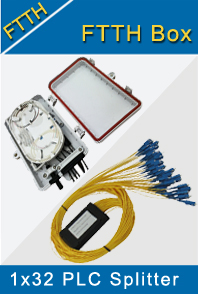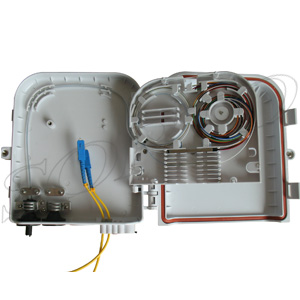-

- Sopto Home
-

- Special Topic
-

- FTTH Knowledge
-

- Why PON for the Last Mile Access?
FTTH Knowledge
- Solving the FTTH Rollout Problem in Multiple Dwelling Units
- WDM PON Introduction FAQ
- A Simple Overview of Optical Power Meter
- ODN is based on PON FTTH Optical Cable Network of the Device
- Using an OTDR to be an Expert in Fiber Link Testing
- How FTTH Broadband Works?
- Connections among Fiber Terminal Boxes & Patch Cables & Pigtails
- Easy to Install a Fiber Terminal Box
- What is Arrayed Waveguide Grating?
SOPTO Special Topic
Certificate



Guarantee
Except products belongs to Bargain Shop section, all products are warranted by SOPTO only to purchasers for resale or for use in business or original equipment manufacturer, against defects in workmanship or materials under normal use (consumables, normal tear and wear excluded) for one year after date of purchase from SOPTO, unless otherwise stated...
Return Policies
Defective products will be accepted for exchange, at our discretion, within 14 days from receipt. Buyer might be requested to return the defective products to SOPTO for verification or authorized service location, as SOPTO designated, shipping costs prepaid. .....
Applications

Sopto supply the best FTTH solutions for your network!
SOPTO Products
- Fiber Optic Transceiver Module
- High Speed Cable
- Fiber Optical Cable
- Fiber Optical Patch Cords
- Splitter CWDM DWDM
- PON Solution
- FTTH Box ODF Closure
- PCI-E Network Card
- Network Cables
- Fiber Optical Adapter
- Fiber Optical Attenuator
- Fiber Media Converter
- PDH Multiplexers
- Protocol Converter
- Digital Video Multiplexer
- Fiber Optical Tools
- Compatible
Related Products
Performance Feature
FTTH Knowledge
Recommended

Why PON for the Last Mile Access?
“Last mile” is a term used for describing connection between the individual subscriber and service provider routing center. It is a final connection between the customer and the core network. PON is containing of network interface unit located on the customer part, remote node and the terminating equipment located at the central office. The connection between the remote node and network interface unit is referred as the distribution network, while the connection between central office and remote node is a feeder network. Main services for the broadband access networks are the downstream services that can individually direct, broadcast or multicast services depending on chosen architecture and technology.
The access networks are often referred as the slowing factor in the telecommunication infrastructure. Mainly it happens due the increasing demand for higher speed bandwidth which is limited in widely deployed residential access technologies like Del and cable data. On the other hand it is available for the core optional networks and LANs.
Outdoor Splitter Distribution Box
We should understand the difference between the legacy network in LANs with maximum bandwidth of 10 to 100 Mbps and the optical networks that has different corvine wavelengths in WDM where each wavelength is capable of carrying tens of gigabits per second. Old equipment is the main slowing factor for the increasing bandwidth and since old equipment is mostly allocated at the customer premises it is being called last mile on last kilometer problem. Many service provides are choosing solving this problem a priority for future broadband access.
Most of the worldwide access providers are investing to the FTTH and BWA in order to solve this problem faster. PON approach is the most attractive due of the ability to deliver gigabit-rate signal cost-efficiently. It is often being compared to the active component network-VDSL, PON is lowering the cost of the network deployment and maintenance by using passive components in remote node between the OLT and ONU/ONT.
Investments to the PON upgrade should be done going downstream starting from the enteral office and ending in customer premises. First the aggregation link on the OLT is being located and a transport network point of presence. Then PON access site should be deployed in the remote node. Next, the feeder lines for multiple remote nodes in multiple PONs should be deployed. Finally, the “first mile” is being covered the passive splitter and access lines to customer ONTs/ONUs.
PON is getting more cost effective when the density of the access sites is increasing. However, at some point the costs are starting to get higher because of the aggregation inks. These expenses are getting higher than savings from the shorten feeder links in the network. But in the scenario where access sites are being selected appropriately, the expenses might be lowering twice compared to the P2P Ethernet. Also we should not forget that PON consumes much less energy.
The PON standards can be written in the table:
Broadband Passive Optical Network | BPON | ITU-T G.983.1 |
Ethernet Passive Optical Network | EPON | IEE 802.3-2008 |
Gigabit-capable Passive Optical Network | GPON | ITU-T G.984.1 |
10Gigabit-capable Passive Optical Network | 10G PON | IEEE 802.3av-2009 and ITU-T G.987 |
All of the PONs are using TDM (Time Division Multiplexing) and TDMA (Time Division Multiple Access) technologies. Both systems are using single optical carrier, but while TDM is using it for down-upstream. Another type of PON –the WDM-PON is currently under development for future systems with higher capacity using multiple wavelengths.
For more info, please browse our website. For purchasing fiber optic assembly products, please contact a Sopto representative by calling 86-755-36946668, or by sending an email to info@sopto.com.




